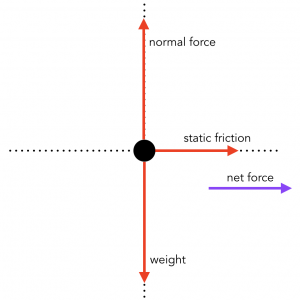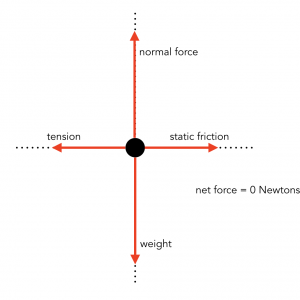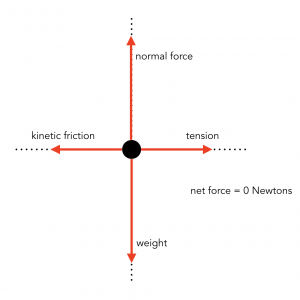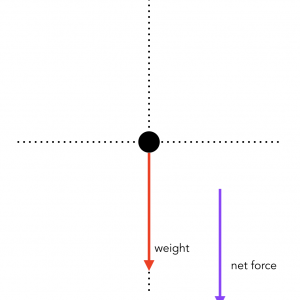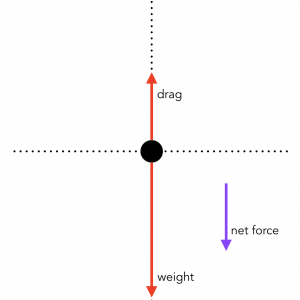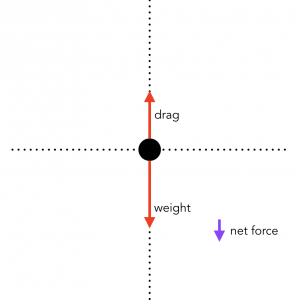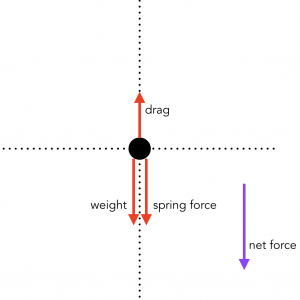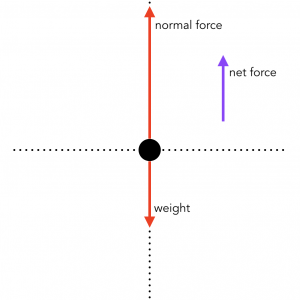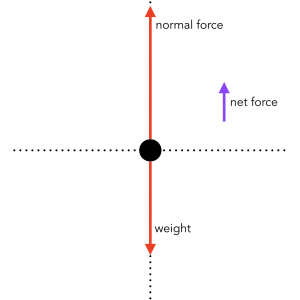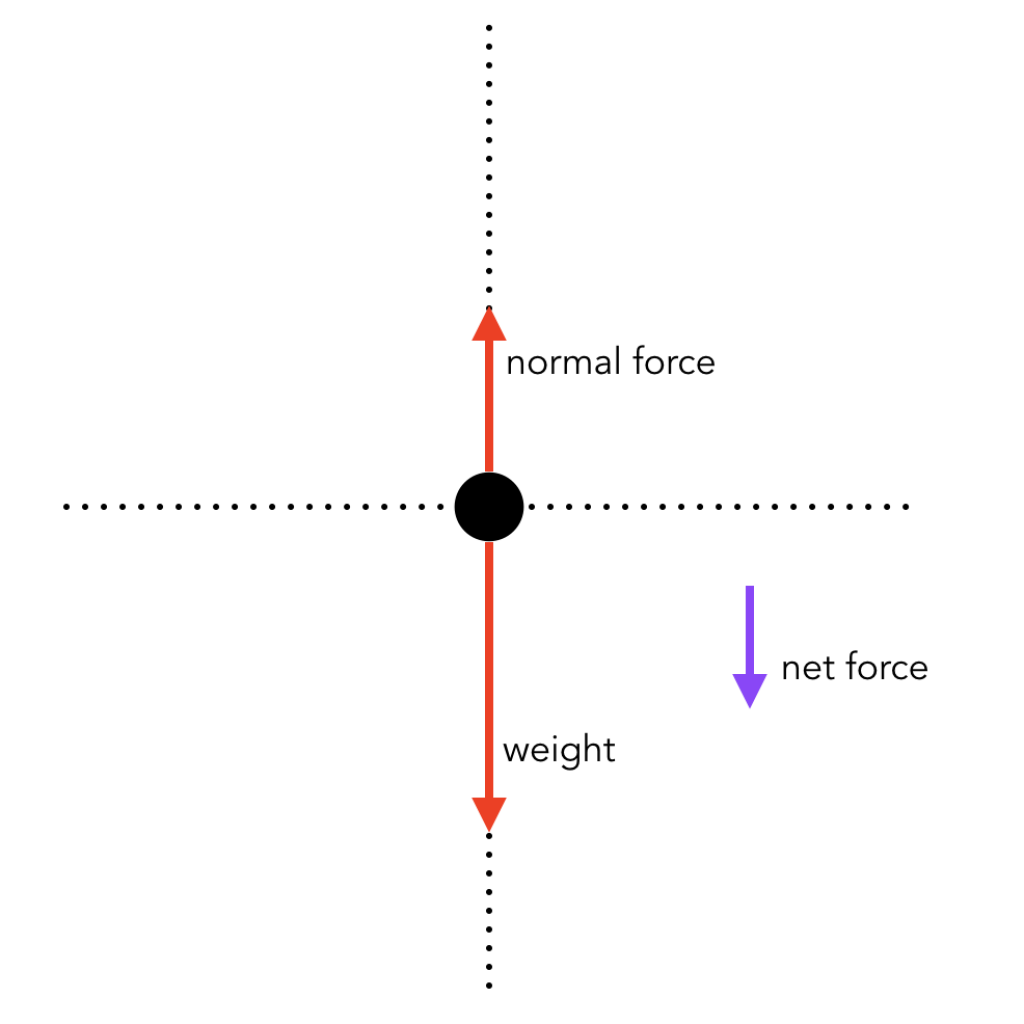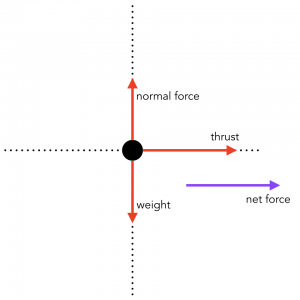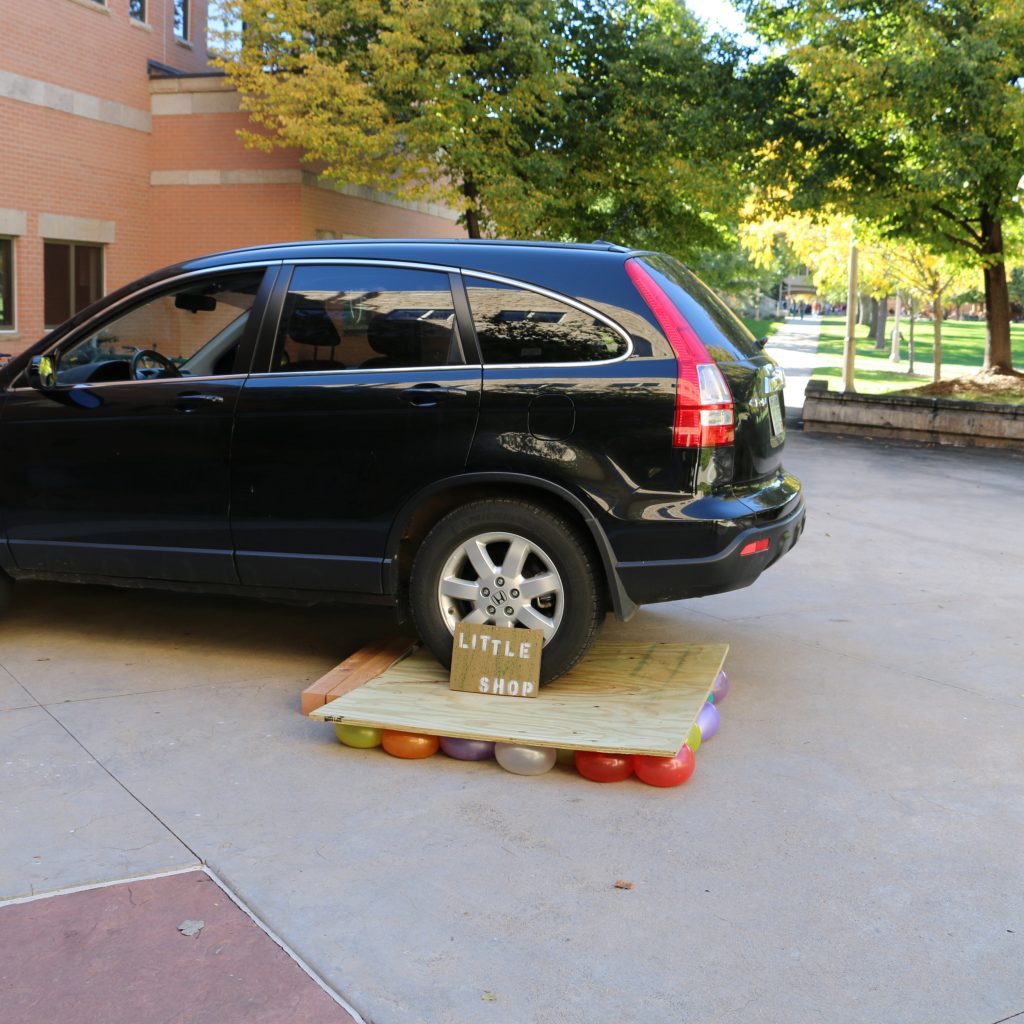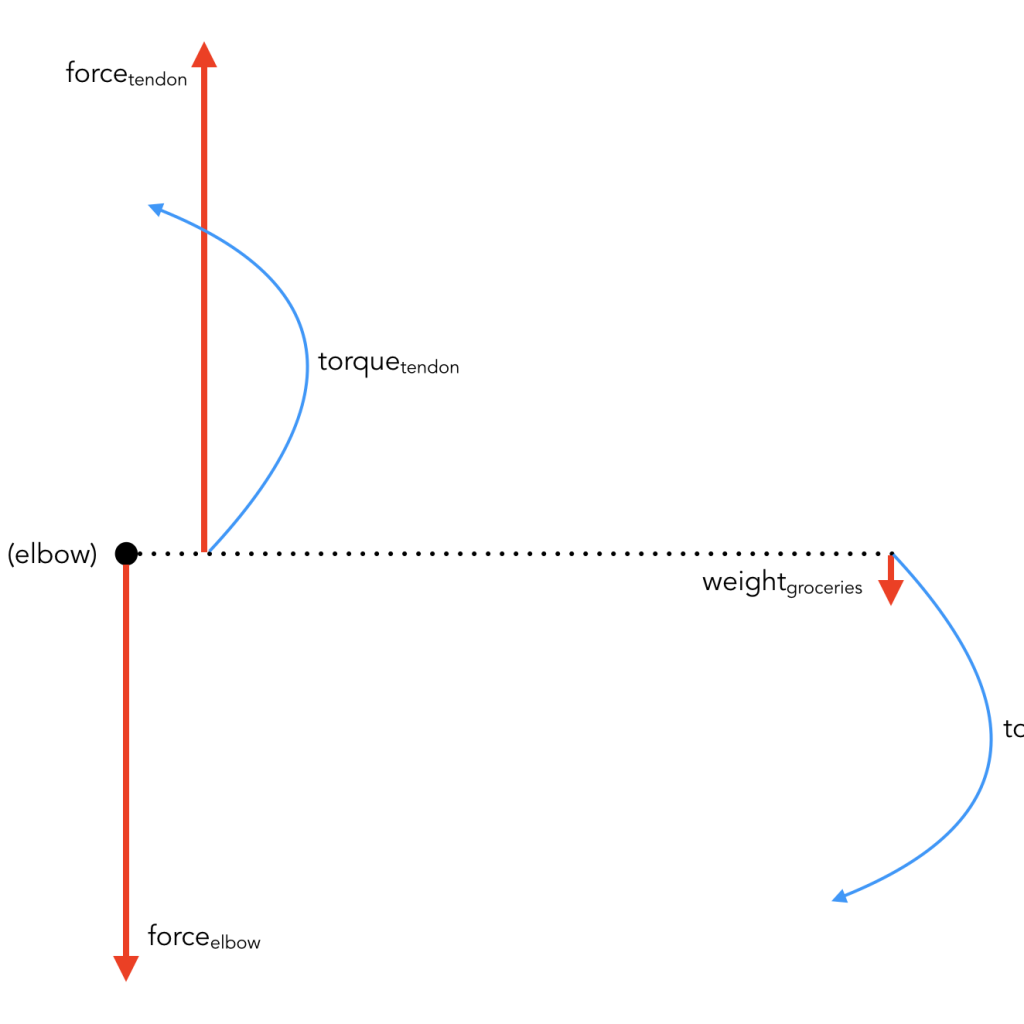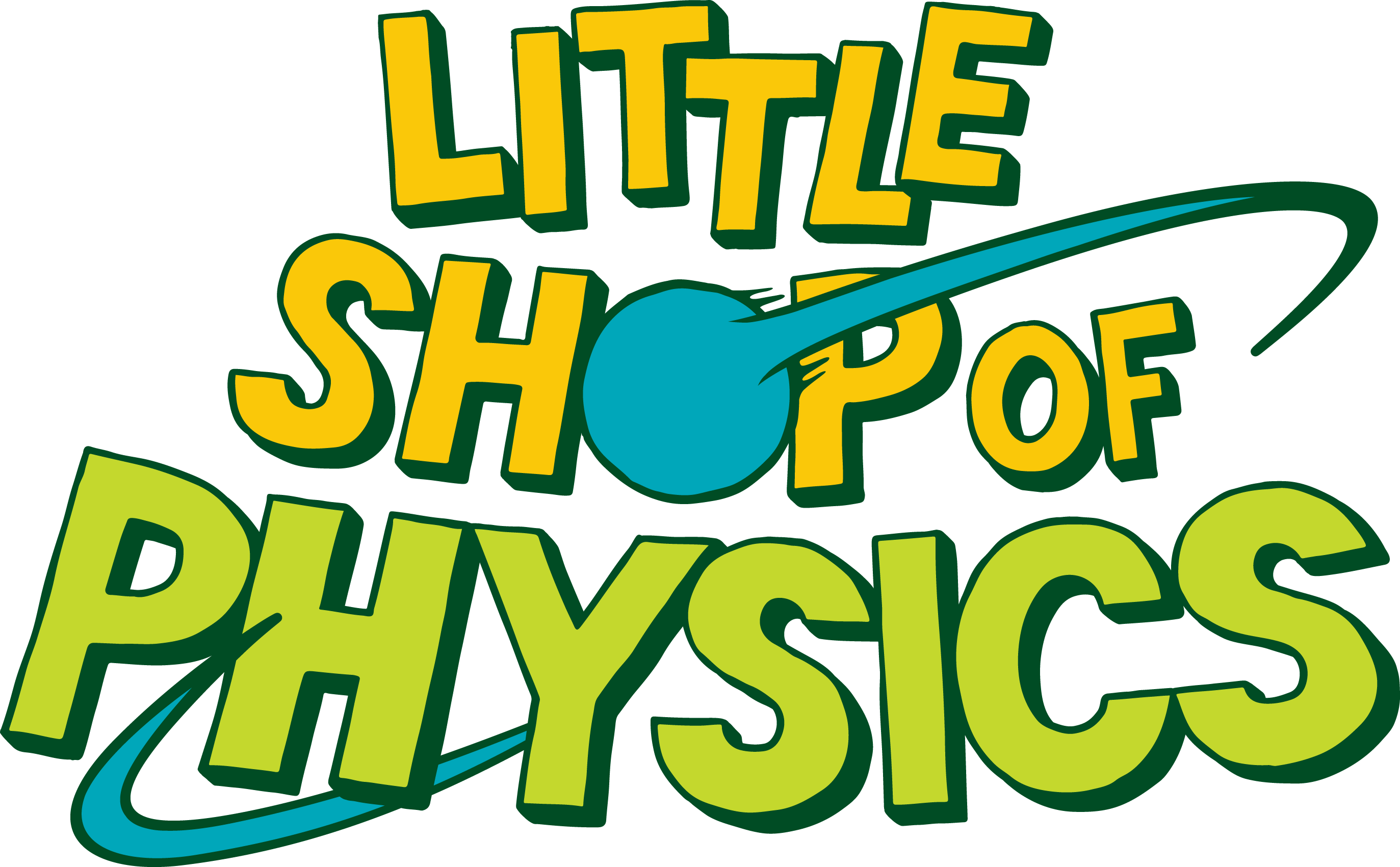Everything You Need to Know About Force & Motion
What can you do with 100 battery-powered toy cars? Why does a rocket go up when its thrusters are pointing down? Why should you carry your grocery bags at your elbows instead of in your hands? The answers to these questions and more lie ahead.
You’ll likely not have to think long to come up with an everyday situation you could easily describe in terms of force and motion. Some aspects are probably quite intuitive, but others might be less so. Consider this: You’re riding your bike and you’re stopped at an intersection. The light turns green, and you get yourself back up to cruising speed. You could easily — and accurately — replace the last clause of the previous sentence with ‘and you accelerate away from the balk line.’ You know that if you’re changing your velocity, you’re accelerating. But if you’re accelerating, there must be a net force on the you + your bike system. What sort of force is driving your acceleration? How would we describe the situation if you were turning at the intersection instead of going straight through? Let’s develop our understanding a bit more.
Theory
You’re likely familiar with the idea that acceleration is speeding up, but physicists have a broader definition that incorporates speeding up, slowing down, and changing direction. Acceleration is a vector quantity — to completely describe an object’s acceleration, you must know both the magnitude and the direction of the acceleration. Specifically, we define acceleration as the change in an object’s velocity per unit time. Velocity, in turn, is specifically the amount of and direction of change in position per unit time. (A note here: Velocity is not the same as speed! Velocity is a vector quantity too, and speed is just the magnitude of the velocity vector. To define a velocity, we must include the direction of travel.)
Forces are the reason things speed up, slow down, or change direction — i.e., the reason that things accelerate. Broadly speaking, a force is a push or a pull (so, as you might expect, force is another vector quantity). If there’s no net force on a moving object, its velocity won’t change — this is Newton’s first law (of three). By the same token, if there is a net force on an object, its velocity will change — it will accelerate. This is Newton’s second law [specifically, Newton’s second law states that a = Fnet ÷ m: an object’s acceleration (in m/s2 — i.e., meters per second per second) is the quotient of the net force acting on it (in Newtons, N) and its mass (in kilograms, kg); a and Fnet are both vector quantities, but m is not, so the direction of Fnet defines the direction of a]. You’ve probably heard Newton’s third law described thus: “Every action has an equal and opposite reaction.” There’s some truth in this, but we can make the physical facts of the matter much more clear.
Let’s do this by returning to the question we asked above: What force causes you + your bike to accelerate forward when you pull away from an intersection? You might think you’re pushing yourself forward, but this is not physically possible. We say that the entity which exerts a force is the ‘agent’ and that which the force is exerted upon is the ‘object’; an object cannot be its own agent — you can’t exert a net force on yourself. However, the object can and absolutely does exert a force on the agent that is equal in magnitude and opposite in direction to the force the agent applies to the object. This is really what Newton’s third law tells us: A force is never alone. It always has a mirror-image twin that’s acting on the agent of the first force. (This is why you can’t exert a net force on yourself — the action and reaction force vectors cancel one another.) Think about the point where your bike tires meet the road. The tires are moving opposite the direction of your overall velocity — the tires are pushing backward on the road. We know, then, that the road must be pushing forward on your tires. If this forward force from the road is larger than the backward force from the air you have to push out of the way as you move, there is a net forward force on you, so you accelerate forward. (Note that Newton’s third law makes no comment on the relative effects of each force — the road’s mass is much, much larger than yours, so even though you push backward on it with the same magnitude force it pushes forward on you with, the road’s acceleration is negligible.)
Before we move on to applications and experiments, let’s take a few moments to talk about different types of forces and how we analyze them — this will help us more clearly and fully describe what we see in the videos to follow. All of these forces fit the general definition of a force we used above.
-
- weight — Weight is the force whose agent is gravity. Weight forces are exerted whenever a mass is close to another mass; however, for our purposes (and in your experience) the interaction is only really meaningful if the masses are reasonably close together and if one of the masses is very large— for example, if it’s the earth. Weight is the reason you don’t spontaneously drift off the moon — the earth pulls you toward its own center.
- friction — When two surfaces are in contact, macro- and/or microscopic projections on each surface catch on each other. To move the surfaces relative to one another, you must push projection after projection on one surface past projection after projection on the other. This (along with the breaking of transient molecular bonds that form between the surfaces) results frictional forces in opposition to the direction of motion. We’ll consider two types of friction (there is a third — rolling friction — but it’s typically quite small in everyday situations):
- static friction is at play when two surfaces are not sliding relative to one another — it keeps things “stuck” in place
- kinetic friction is at play when two surfaces are sliding relative to one another — it’s about slipping
- drag — You might think of this as “air resistance,” but drag can be exerted by any fluid on an object moving in it. The exact cause of drag is situational (it depends on the characteristics of the fluid and the velocity of the object); this is beyond the scope of our discussion today, but be aware of the basic situations in which drag applies, and the fact that the drag force vector always points opposite the velocity vector.
- spring force — When you stretch a spring, it pulls back. When you compress a spring, it pushes back. You’ve got this one. The next two forces are variations on spring force.
- tension — When you pull on a rope, it pulls back. As you pull, you’re stretching bonds between the molecules that comprise the rope; these bonds act like tiny springs. It is from all of these tiny spring forces that the tension force arises.
- normal force — You know that a surface can push on you; that’s a normal force. (“Normal” refers to the fact that the force a surface exerts is perpendicular to the surface — i.e., it’s along the normal to the surface.) When you sit down on a chair, you compress molecular springs within it. We call the sum of the upward force these many, many tiny compressed springs the normal force of the chair on you.
- electromagnetic forces — These are a little different than the forces we’ve discussed thus far, and though they’re fascinating and important, we won’t get into them here. They’re exerted by electromagnetic fields, and we discuss them much more in Everything You Need to Know About Magnetism and Everything You Need to Know About Electricity.
When working with forces, we really like to use free-body diagrams. These diagrams help you organize your thoughts about the forces acting on an object and figure out which way the net force acting on it is (if there is one). To draw a free-body diagram, first represent your object of interest as a dot or a box at the intersection of an x axis and a y axis. Then, reason through what you know about your object of interest to figure out what types of forces are acting on it (don’t worry about any forces exerted by the object). Represent these forces as labeled vectors with their tails starting at your object of interest; use longer arrows for larger forces and shorter arrows for smaller forces. Any vector (or component of a vector, if the vector does not lie exactly along the x or y axis; we won’t get into this here, as our focus is on understanding of basic key concepts) that isn’t fully canceled out by a (component of a) vector in the opposite direction contributes to the net force. For example, here’s a free-body diagram for our well-loved example of you pulling away from an intersection on your bicycle:
The normal force from the ground and the weight force from gravity are exactly equal and directed exactly opposite one another, so there is no net force in the y direction. However, the static friction force from the road (this is what pushes forward on your tires while they’re pushing backward) is not canceled at all by another force (we’re neglecting drag force under the assumption that your velocity is relatively small). This means that the net force is equal in magnitude and direction to the static friction force, a sensible result — we know that your acceleration is in the same direction as the force from the road, and the net force and acceleration vectors always point in the same direction.
Application
Force and motion is a set of topics that lends itself well to hands-on experimentation; you can incorporate any number of everyday objects into your exploration. Below is a series of videos that can help you develop and communicate some of the key principles along the way. We’ve organized the videos in terms of “the 5 E’s”: Engage, Explore, Explain, Extend, and Evaluate. This structure has worked well for us in teacher workshops, and we hope it works well for you too! However, we always welcome your feedback. Please contact us anytime to let us know what’s working, what’s not, and how we can make this resource more useful for you. Enjoy!
Engage
The purpose of the Engage segment is to pique students’ interest. We don’t need to directly transmit concepts at this stage, merely give students a chance to think and get excited about the topic we’ll be discussing.
Video 1: One Hundred Toy Cars
You probably don’t find a standard battery-powered toy car particularly awe-inspiring. But a 100-strong fleet of them is a force to be reckoned with (pun intended). As we discussed above, the cars can move forward because of a frictional force from the floor pushing them that way. For the purposes of this video we used “tumble buggies,” which have particularly friction-tastic tires (the tires have a high coefficient of friction). Connecting 100 cars together results in a total forward frictional force on the whole lot that’s 100× that on a single car. As the cars move forward, they can exert a force on another object by attaching a rope to the rig connecting all the cars — i.e., to produce a tension force. This tension force proves large enough to pull a person across the floor and a nail out of a board!
Assuming the tumble buggies are moving to the right with constant velocity, the free body diagram for the buggy fleet looks like this:
And the free body diagram for the person being pulled at a constant velocity by them looks like this:
Video 2: Buoyancy
We didn’t discuss buoyancy force above, but it’s quite interesting and relevant. A buoyancy force is an upward force exerted by a fluid on an object in it; the force arises because the displaced fluid would quite “like” to go back where it was. The magnitude of the buoyancy force on an object in a fluid depends on the the density of the fluid and the volume of fluid displaced by the object. An object rises in a fluid column if the buoyancy force is greater than the weight force, it sinks if the weight force is greater than the buoyancy force, and it is neutrally buoyant if the two forces are equal. The determinants of the buoyancy force lead to some rather interesting outcomes. For example, a can of diet soda and a can of regular soda have equal volumes, but the diet soda is more dense because it contains artificial sweeteners instead of sugar. Placed in water, the diet soda will float and the regular will sink! We can also play with the density of the fluid. As you likely know, granite sinks in water. But it will merrily bob at the surface of a pool of mercury (which, for all its silvery charm, has admittedly more drawbacks than a pool of water).
Explore
In the explore segment, students get to experience firsthand the principles we hope to teach them. We still don’t need to explicitly describe any concepts yet — the students will start working these out as they explore.
Video 1: Rotation Translation
The force of gravity is equal on any two objects of the same mass rolling down the same ramp. The normal force and friction force (let’s consider two objects with similar surface characteristics) from the ramp will also be the same on each object, so we’d expect to have the same acceleration, and thus reach the bottom of the ramp at the same time. But rolling motion is special — it’s a combination of translational (linear) motion and rotational motion of each point on the object — and we can tweak the characteristics of the ramp so that the objects do not reach the bottom simultaneously. We use three identical balls and a ramp with narrow, medium, and wide U-shaped tracks. A ball on the narrow track goes further over the course of one rotation than a ball on the wide track does, so the ball on the narrow track wins the race every time!
Video 2: Vortex Cannon
We’ve talked about how air can exert a force on you as you move through it. But moving air can also exert a force on you, even as you stand still. (In fact, these situations aren’t so different — motion is relative; you can only describe your motion with respect to some other object. If you’re standing outside on a windy day, it’s equally correct to say that, from your perspective, the air is coming toward you at 7m/s and to say that, from the air’s perspective, you’re coming toward it at 7m/s.) It’s easy to illustrate this point using a vortex cannon. When you push a puff of air through a circular opening of the right size, the air pocket forms a vortex — kind of like a tornado that’s wrapped around in a circle. When the vortex collides with an object, it exerts a force on the object. We use a series of hanging strings to observe this effect, but you could point the vortex cannon at just about anything. When the vortex is moving faster, the force it exerts is larger. If the object the vortex collides with is heavier, the object’s resultant acceleration is less.
Video 3: Forces and Falling
Some ideas for experiments you can do with your students if you have access to a high place it’s safe to drop things from. We say an object is in free fall if gravity (weight) is the only force acting on it. The net force acting on an object in free fall is thus equal to the weight force, and the acceleration of the object is thus equal to the acceleration due to gravity (9.8 m/s2 on Earth), no matter the object’s mass. The free body diagram of an object in free fall looks like this:
Free fall is often a good description for the motion of relatively heavy objects falling relatively short distances. However, drag forces play an important role in the motion of lighter objects, and in that of those falling at greater speeds. These objects are not in free fall (weight is not the only force acting on them), and the magnitude of their acceleration will be less than 9.8 m/s2 (unless, of course, they’re in a vacuum — see falling hammer and feather footage from the first lunar landing — but we’ll assume you won’t be doing this experiment on the moon). We use a small stuffed animal and a very large one to illustrate this point. Free body diagrams for each stuffed animal look like this (large on the left, small on the right):
It’s also possible to fall faster than 9.8 m/s2 on earth — if something pulls you down. By affixing the smaller stuffed animal to a giant slinky stretched to the ground below, we added on a downward spring force to the downward weight force on the little guy:
Even though the ratio of the drag force to the weight force is still higher for the small stuffed animal, with the slinky assist it falls faster than the large one!
Explain
Now it’s time to codify and formalize the students’ observations. The following videos can help you elucidate and demonstrate the basic concepts underlying the discoveries students made as they explored.
Video 1: Free Fall
A nice integration of many of the concepts we’ve experimented with and observed so far. We put a variety of mini-experiments inside a large clear bin, then tossed the bin into the air to observe the effects of free fall on each vignette (note that as soon as gravity is the only force acting on an object, it’s in free fall — whether it’s going up or down!). A camera inside the box reveals that unsecured objects inside appear to “float” when the whole system is in free fall. Here’s why: Recall that any object, regardless of its mass, in free fall on Earth has an acceleration of magnitude 9.8 m/s2. It thus appears as if gravity is not acting on anything in the box — as if everything in the box is “weightless” (apparent weight = 0 N). The concept of apparent weight and the measurement of weight generally is an interesting one; let’s explore it a little more by considering the hamster on the scale. When the box is in free fall, the scale reads 0 [a note here — pounds are a unit of weight (the force of gravity on an object), whereas kilograms are a unit of mass (how much matter there is in something); multiplying a object’s mass in kg by 9.8 m/s2 gives its weight in N]. This makes sense; we already decided the hamster’s apparent weight is 0 N in this situation. But when the box is slowing to a stop on the blanket, the scale reads more than the weight of the hamster. The key here is that the box is slowing to a stop. This upward acceleration means there must be a net upward force; the upward force on this hamster is a normal force from the scale, like so:
This is why the scale reading jumps so high — the scale reports not your weight directly, but the normal force the scale exerts on you. It turns out that you don’t perceive the weight force on you either; rather, your “feeling” of weight comes from the contact forces supporting you at any given moment. Perhaps you’ve noticed this while riding on an elevator (consider traveling upward): When the elevator is accelerating upward, you “feel heavy” (your apparent weight is greater than usual; below, left). All seems as expected while you’re traveling at a constant velocity. But when the elevator is slowing to a stop (accelerating downward), you “feel light” (your apparent weight is less than usual; below, right).
Video 2: Alcohol Rocket
We haven’t explicitly discussed thrust yet, but you likely have an intuitive understanding of this force already, and it’s easily understood in terms of Newton’s 3rd Law. Thrust refers specifically to the forward force exerted by gas molecules on some object which is pushing them rapidly backward. For example, the turbines in jet engines push air backward (opposite the motion of the plane); the backward-moving air in turn exerts a forward thrust force (in the direction the plane moves). In this video we examine this application of Newton’s 3rd law at a smaller scale using an “alcohol rocket.” We spray a little isopropyl alcohol inside a 1-liter bottle mounted on wheels, then light the vapor inside the bottle on fire. As the vapor burns and heats up, it rapidly expands, increasing the pressure inside the bottle (see Extend Video 1). As hot gases are pushed out the opening of the bottle, they provide a thrust force opposite the direction of its motion. This thrust force is approximately equal to the net force on the rocket, as in the free-body diagram below (we ignore drag and rolling friction here, as both are very small in this situation), so the rocket accelerates in the direction of the thrust.
Extend
Once the basic principles are clear, we want to encourage students to expand their thinking and ask questions that go beyond the scope of what we’ve already discussed.
Video 1: Air Power
In this video we think about pressure, the amount of force per unit area. You likely know how many psi you should inflate your car tires to; “psi” stands for “pounds per square inch” — one possible unit of pressure [there are many units of pressure, e.g., millimeters of mercury, atmospheres, and so on, but physicists prefer Pascals (Pa; where 1 Pa = 1 N/m2)]. Regular party balloons can withstand surprisingly high pressures, to the extent that just a handful can withstand one quarter of the weight force of a car — so long as the force is distributed over a board with a relatively large area. There’s a lot more to say about pressure with respect to various properties of matter, but that’s beyond the scope of our discussion today.
Video 2: Forces & Torques Part 7
Here we’re exploring another topic related to force: torque. Torque describes how much “leverage” you get when you apply a certain force at a certain distance from some fixed pivot point. Forces cause acceleration; torques cause rotation. Torque can be computed as the product of two values: (1) the distance (in m) at which a force acts from the pivot point, and (2) the magnitude (in N) of the force (more properly, the component of the force that is perpendicular to a line between the pivot point and the point where the force acts). The more torque you can apply to an object, the more easily you can rotate it — i.e., you don’t have to apply as much force to rotate an object if you’re pushing on it farther from its pivot point. You probably already know this intuitively: it’s easier to open a door if you’re pushing near the doorknob than the hinges, or to open a walnut with a nutcracker than with your fingers, or to loosen a bolt with a long-handled wrench than a short-handled one. We can evaluate the human body in terms of torque too. For example, consider lifting a bag of groceries by bending your arm at the elbow. To make this happen, your biceps tendon has to apply an upward torque on the bones of your forearm equal in magnitude to the downward torque exerted by the grocery bag in your hand. However, the force from your biceps tendon acts much closer to the pivot point (your elbow) than the (weight) force from the grocery bag — this means that, for the torques to be equal, the force exerted by your biceps tendon must be much, much greater than the weight of the grocery bag! (You may be wondering about the weight of your forearm — this force does result another downward torque, at the center of mass of your forearm, and this does increase the total upward torque and force your biceps tendon must provide.) Your biceps tendon is “pushing at the hinges,” and the grocery bag is “pushing at the doorknob.” You can make the whole situation much easier for yourself, as you may already know, by carrying the grocery bag at your elbow. This decreases the torque (not the force — the bag’s weight hasn’t changed!) it exerts on your arm, and thus the force your biceps tendon must provide (because the balancing torque it must provide is smaller). We might diagram the situation like this (note the differences from a free-body diagram):
You might be wondering about the arrow labeled forceelbow — what is it, and why is there no corresponding torque? It’s tough to characterize this force precisely; it’s some combination of normal forces and tension forces acting within the elbow joint. However, we know it must exist and that it must have the direction (down) and magnitude (forcetendon − weightgroceries) indicated, because your forearm isn’t accelerating rapidly upward! We could draw a free-body diagram for your forearm, and we know that there is no net force, so all our forces must completely cancel out. However, forceelbow does not exert a torque, because it acts at the pivot point (so the product of the distance to the pivot — 0 m — and the magnitude of the force is, naturally, 0 N·m).
Evaluate
It’s important to figure out what students understand after the first four E’s. Tests and quizzes are one option, but there are many others.
This one is up to you — what works best for you and your students? We, for example, have had good results with turning the tables and letting the students make a video at this stage. We’d love to hear what works in your classroom!


